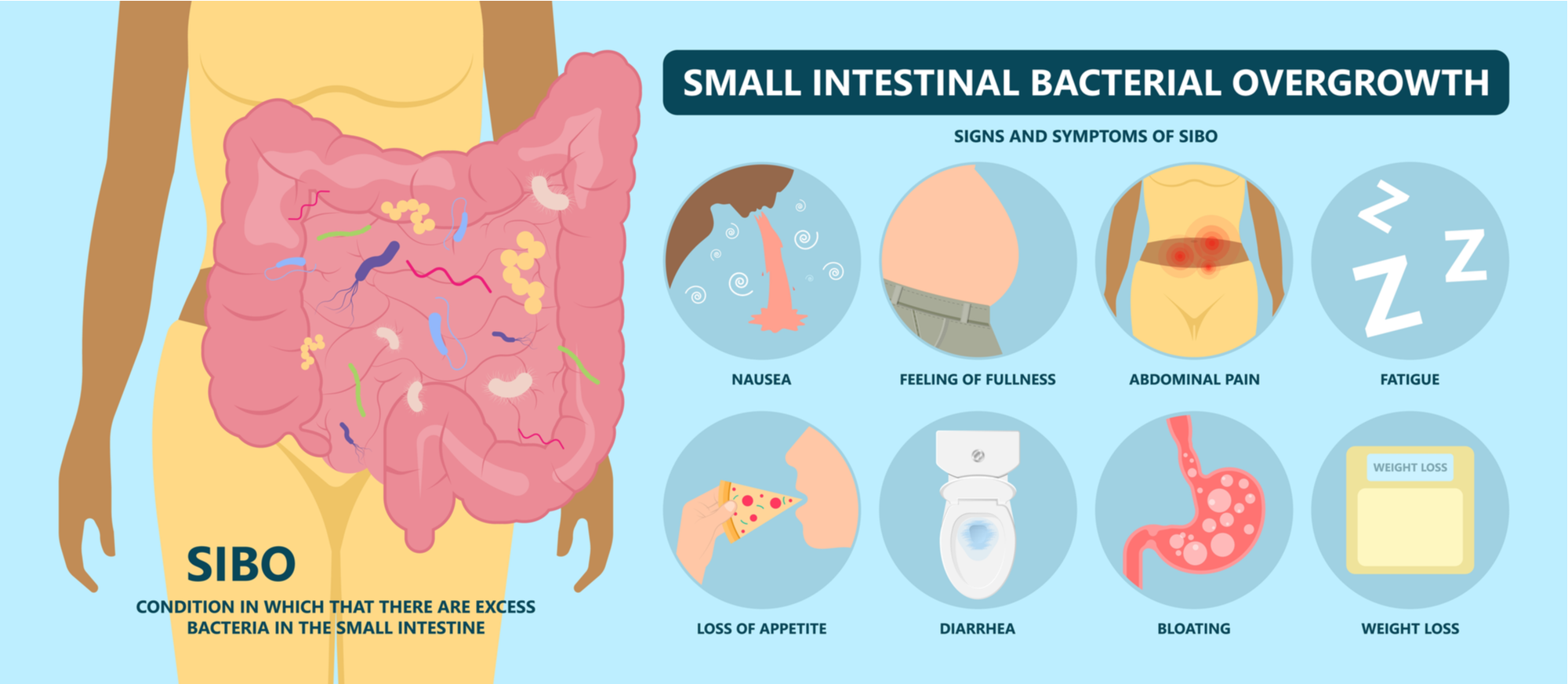
Understanding the bacteria involved with SIBO
You may have had small intestinal bacteria overgrowth (SIBO) like me, been recently told you have it or think you might have it. So, how do you know for sure?
First, let’s review what SIBO is all about.
We have more bacteria that live in our gut (stomach, small intestine, large intestine) than cells in our body. Most of the bacteria reside in the large intestine. The large intestine has thousands of types of bacteria. Whereas the small intestine should only have a small amount and the stomach even less because of our stomach acid acting as a natural antimicrobial. Too many bacteria in the small intestine is where the problem lies. This overgrowth can lead to bloating, constipation, diarrhea, brain fog, depression, irritability, carbohydrate and fat malabsorption, nutrient deficiencies and the list goes on.
To add to the insult, methanogens which are not bacteria but are archaea can have a negative effect on gastrointestinal issues. The new term for excess methanogens in the gut is IMO or intestinal methanogen overgrowth. These guys can cause similar and sometimes the same symptoms as bacteria involved in SIBO. Over-production of methane can be one of the main contributors to constipation.
Now let’s look at the types of bacteria in the small intestine.
It is host to a rather small number of specie types. The main players in the small intestine include Escherichia coli (e. coli), Klebsiella, Enterococcus, Bacteroides, Ruminococcus, Dorea, Clostridium, Coprococcus and a couple of others. Yes, believe it or not, most of us have some level of e. coli. In fact, we all have some of these potentially harmful guys, co-existing with our beneficial bacteria like an orchestra. It’s when the bacteria and methanogens get out of tune and sync, that the playing can come to a squinching halt… or at least it can bring us to down a level that makes it challenging to function. Who can think when they have diarrhea or motivated when they have brain fog or are depressed?
Bacteria and methanogens produce gases - hydrogen, methane, and hydrogen sulfide (H2S). Excessive gases can happen for several reasons, including hydrogen bacteria cross-feeding, methanogens utilizing hydrogen, fat malabsorption, and undigested carbohydrates in the small intestine. Two of the gases, hydrogen and methane, are what are measured with a SIBO breath test. SIBO breath testing is great for telling you that you have extra gas production from bacteria or methanogens. However, although the test can show us the level of gases (hydrogen, methane, or both) in the small intestine, it doesn’t tell you is who is causing the excess gas production. Nor does the test pick up hydrogen sulfide. Increased levels of H2S can prohibit the production of butyrate... food for the cells that keep our gut lining healthy. Butyrate producers can also decrease nitric oxide, which e. coli uses to proliferate.
So How Do We Detect Who’s Causing the Trouble?
Since it is very invasive to test the bacteria in the small intestine, stool testing can give us some data that points to an overgrowth of bacteria in the small intestine. It is likely the excessive bacteria in the small intestine is not just caused by one type of bacteria, but a number of them. Stool testing provides us a way to see the H2S bacteria producers and the levels. Again, this is something you can’t detect with current breath testing. The main producers of H2S are Desulfovibrio and Bilophila wadsworthia. While the main methanogen is methanobrevibacter smithii. These toxin producers can be found in the toxins section in Biomesight.
Looking at the overall picture from stool testing gives us insights into the health of the gut and if an overgrowth is present. Without knowing the players, we can’t direct the bacteria to get inline or quiet down so that the orchestra plays in harmony. It is better to know the players because some SIBO protocols are not selective enough and can wipe out both the good and the overgrown bacteria.
One last note. Keep in mind that the overgrowth of the bacteria is not typically the underlying problem. SIBO can result from low stomach acid, slow motility (the time it takes food to pass through the small intestine), changes to the terrain from surgeries, infections, chronic stress, GI diseases, and even the standard Western diet.
Stay tuned for learning about ways on how to nurture the gut bacteria without being destructive to all the players.
Patricia Kaufman's Practitioner Profile on Biomesight
A note from the author
I would love your help with my dissertation. If you or someone you know has Type 2 diabetes, is a citizen of the United States, and are between the age of 30 and 75 years, I would appreciate your time in completing a quick survey. My study examines and explores how dietary knowledge, motivation, competency and clinical support relate to dietary adherence in Adults with Type 2 Diabetes [IRB # 1771380-1].
The questionnaire will take you less than 10 minutes to complete using a secure application. You will also have an option to share your perspectives in a one-on-one interview at a later time via phone or Zoom. Your information of course will remain anonymous. If you complete both the survey and interview you will have a chance to win a $50 Amazon gift card.
To take part in the survey click the link below.
Categories: digestive health SIBO Tags: health SIBO
